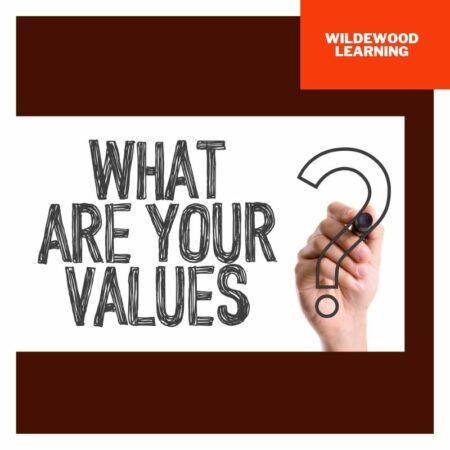A few weeks ago, my daughter graduated from high school. We held the traditional graduation party to honor her achievement. As she stood by the entrance greeting the well-wishers to her party, I heard a variety of questions being asked:
What’s next for you?
What do you want to do?
Where are you going next fall?
All these questions had to do with her future, however, I believe there is one question we rarely ask of graduates,
Who do you want to be?
The underlying element of the “who” question is asking young people to communicate their personal values. Values are the foundational beliefs that we hold and that often shape our choices.
When a young person identifies such values, articulates these personal values, and has the capacity to act upon the specified values, the impact on learning can be significant. Here is a short exercise you can conduct with a young person to assist in identifying values that are personally important.
Identifying Values
We all have stories in our lives where we have felt proud of our accomplishments. Maybe it’s a story about overcoming an obstacle, working with a group of others to finish a project or setting out to do something never attempted before. Whatever the story that comes to mind, your values are hidden in that story.
This activity works best if you can tell your story to a friend or family member. The person listening to your personal narrative can help you identify the values within the narrative. If you need a list of values to look at while listening there is a list on the VIA Character Strengths website of 24 values people hold.
After you finish telling your story, ask your listener to help you identify the values you talked about in the story. Write those values down in a journal or notebook and write further descriptions of how each value shows up in your life. VIA (Values In Action) Institute on Character has a free online assessment tool for both youth and adults that can help identify your top 5 values.
Impact of Values on Learning
When a young person knows the values they hold, and is able to talk about their personal connection to these values, the result of this simple action can impact learning performance.
Dr. Claude Steele, dean of the Stanford Graduate School of Education, conducted a study involving white and African American Middle School students. In the experiment he had half of each group write about values that were personally important to them and why. In the control group, he had each of the students write about which values they felt were the least important. This exercise was performed periodically throughout the school year, and the student’s work followed. The results, especially for the African-American students, was a significant increase in student performance in the group that wrote about their personal values. There was no change in performance in the control group or in students that were already performing at a high level.
There are several reasons why students who affirmed their personal values did better at school:
- Students were reminded of the number of resources available to them.
- The activity broadens the student’s perspective on themselves through a different lens. When a student identifies her values, maybe a test didn’t look so threatening when looking at the big picture of her life.
- Affirming values allowed students to take on challenges that aligned with their values.
- Teachers had a greater insights into the students by reading through the essays, and they were able to build positive relationships with the students.
Values and Relationships
Positive relationships can be formed with young people when they know their values and the adults that surround them can tap into and align with those values. This process allows young people to feel like they are seen and heard. In addition, adults can provide the support needed for the youth, and a positive cycle of affirming values can improve confidence.
Using the power of shared values can have positive and lasting outcomes for young people, leading them on a path to finding success.
The next time you are talking with a graduate or young adult about ask a simple question:
Who do you want to be?
This post is Part 2 in a four-part series. You can find Part 1 here.



